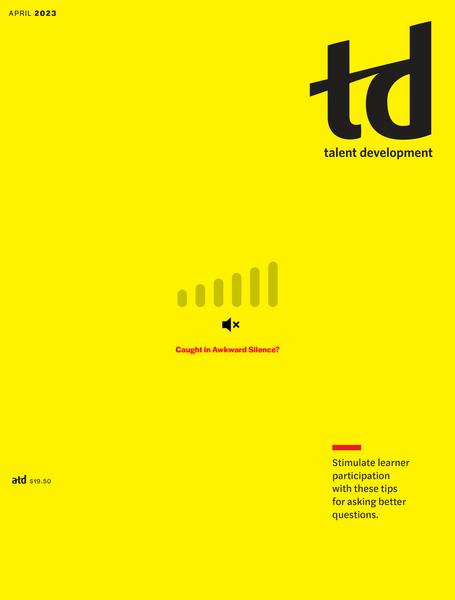TD Magazine Article
Global Hiring Carries On
Employers in most countries are still making plans to grow their workforces, but the pace is slowing.
Fri Mar 31 2023

Amid rumblings of a global recession, more companies currently plan to bring on staff instead of laying off workers. Forty-one percent of the roughly 39,000 employers surveyed intended to hire new people in the first quarter compared to 18 percent who said they would decrease head count, according to ManpowerGroup's Global Employment Outlook Survey for 2023 Q1. That results in a strong 23 percent seasonally adjusted Net Employment Outlook, an indicator of economic and labor market trends.
Employers in many countries outpaced the global average Net Employment Outlook, with Panama leading the way at 39 percent, followed by Costa Rica at 35 percent and Canada at 34 percent. The US bested the global average at 29 percent. Hungary and Poland, however, anticipated net negative scores of -8 percent and -2 percent, respectively.
Looking at specific industries, there is still healthy demand for talent across the board. Despite high-profile early 2023 layoffs at firms such as Amazon, Google, Meta, and Microsoft, employers in the IT industry reported the highest Outlook score of 35 percent, with half saying they expected to add staff. The financial and real estate as well as the energy and utilities industries came next, with Outlook scores above 25 percent.
Despite intentions, hiring growth slowed at the beginning of the new year. "Our report indicates that there are early signs of labor markets softening and hiring intentions moving lower given the economic headwinds we are experiencing," says ManpowerGroup Chairman and CEO Jonas Prising in the report. Several countries reported double-digit decreases in their Outlook scores from the previous quarter, including China at 18 percent, Brazil at 21 percent, and India at 22 percent.
Besides the influence of economic uncertainties on hiring expectations, another factor is that employers report continued struggles in hiring talent with the skills they need. That was the most pervasive in the IT, industrials and materials, and consumer goods and services industries.
"Amidst a cost-of-living crisis and a depreciation in real-time wages, companies need to think more than ever about attracting and retaining their workers—that might start with pay, yet our data tells us flexibility, career development, and purpose-driven work is worth up to 5 percent of salary to many workers," Prising explains. "There are lots of levers available for companies to attract and retain the talent they need to stay competitive."
You've Reached ATD Member-only Content
Become an ATD member to continue
Already a member?Sign In

